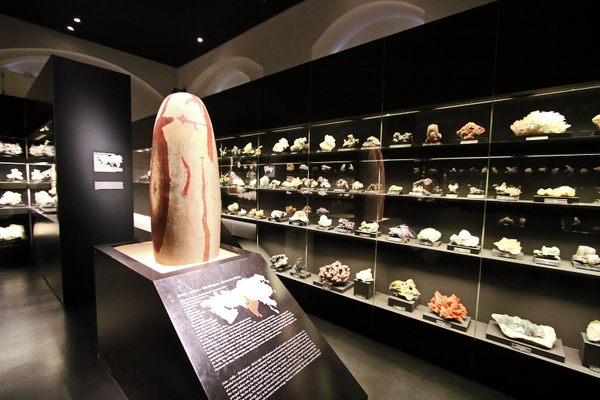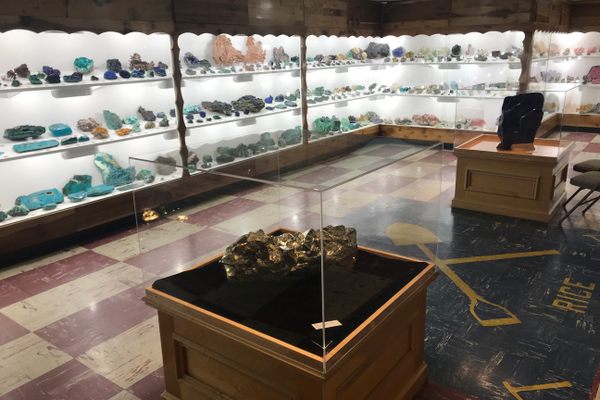About
A rock lover's dream, this little-known museum is home to thousands of glittering specimens, many coming from the Illinois-Kentucky Fluorspar Mining district, which is renowned for its unique minerals.
The mineral museum includes one of the world's most impressive collections of fluorspar (also called fluorite), a naturally colorful crystal that used to be very popular for jewelry. Some of the gems are displayed in a space called the "Wow Room" because of the delighted reactions it elicits from visitors. Another room displays rocks glowing in colorful neon under a black light. On the more whimsical side, there's a rock that resembles Robert Smith from The Cure.
Aside from fluorspar, the museum hosts a trove of other relics. A shelved exhibit holds a collection of pre-historic fossils including a fossilized dinosaur egg. One room holds a myriad of shockingly simple (and dangerous) pre-industrial mining equipment. A fractured wing piece of a top-secret plane that long ago crashed over Providence (which caused the town to go into Marshall law) hangs in the hall. A small but shockingly heavy meteorite from Arizona takes up a humble corner, where a curator can tell you about the two farmers who saw it strike the earth, and if you're lucky, let you attempt to lift it.
The museum workers will effusively fill you in on the uses of minerals, local history and legends, smuggling miners, and copious speculative lore as to the acquisition of some of the museum's artifacts. They are eager to spread their love of treasure hunting and might tell you a few their favorite dig sites.
Most of the minerals came from Ben E. Clement, a miner that arrived in Kentucky in the early 20th century dreaming of operating his own fluorspar business. The minerals produced from his mines served the region’s booming steel industry. Clement later turned his focus toward supplying private collectors with fluorspar and other minerals. He himself had his own impressive collection, which he later turned into a museum.
Clement continued amassing more minerals up until his death in 1980. Now, his namesake museum holds his many, many rocks, as well as letters, photographs, and mining equipment. From April to October, the museum also hosts monthly digs, where visitors can scour the earth in hopes of finding their own magnificent mineral.
Related Tags
Know Before You Go
There's a lot of free parking. Be sure to ask the staff any questions you have, they are full of facts and stories about the artifacts that will leave you with more wonder than before.
Published
January 19, 2018

























